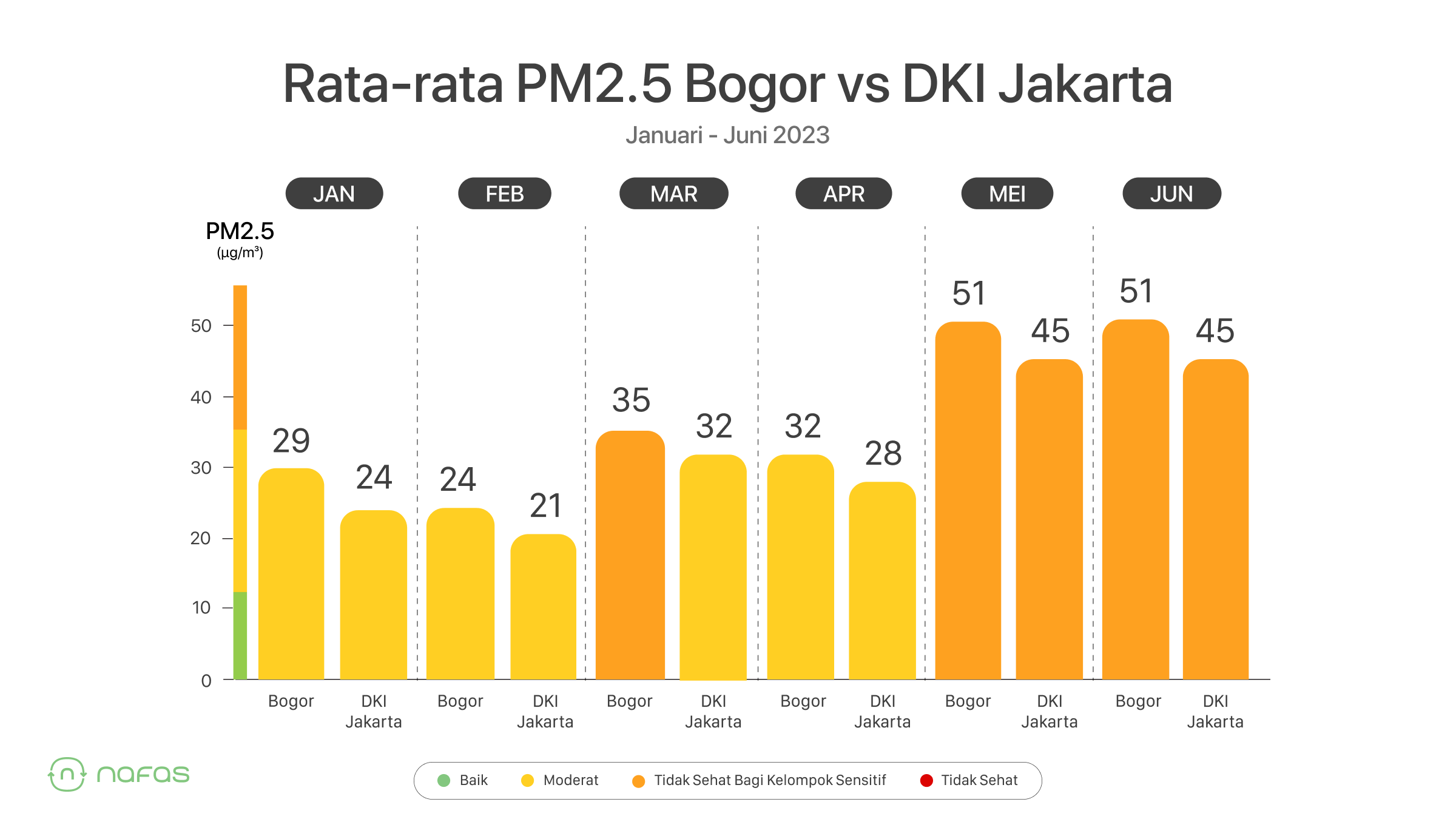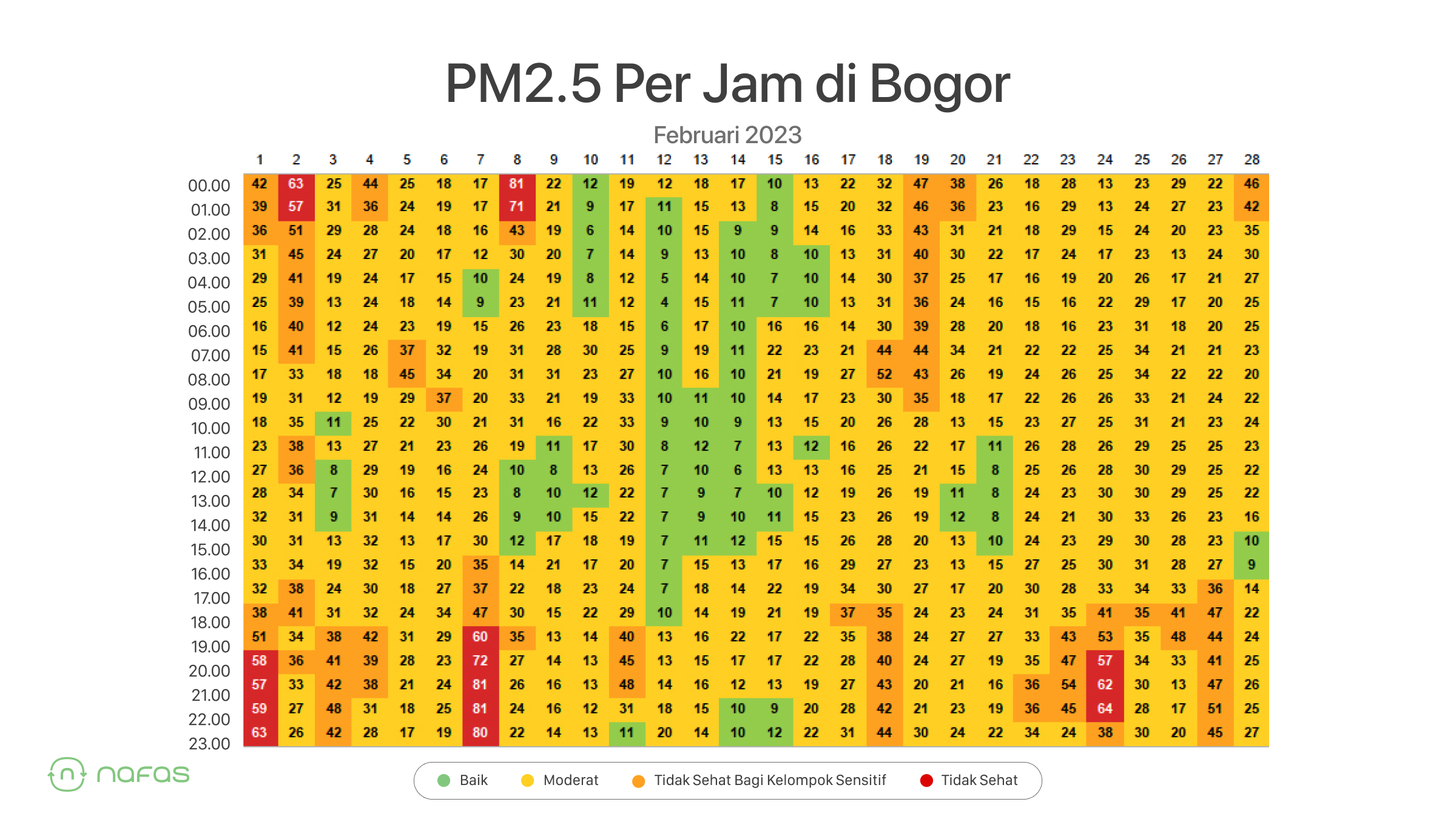With a Higher Pollution Than Jakarta, Bogor is No Longer Your Go-to Place for ‘Healing’
Summary:
- During May and June, the difference in air quality between Bogor and Jakarta reaches up to 14 µg/m3.
- Various factors contribute to the difference concentration in Bogor Timur and Bogor Barat, including topography affecting wind patterns and the presence of trapping layers in both locations.
Bogor, or the City of Rain, is popular among Jakarta residents for a short getaway due to its abundance of green zones and tree-covered areas. However, despite frequent rain showers and the presence of numerous trees, air pollution in Bogor is actually higher than in Jakarta.
The western part of Bogor has higher concentrations of PM2.5 compared to DKI Jakarta, while the eastern part has slightly lower concentrations, with a difference of only 2 µg/m3. Surprisingly, DKI Jakarta, with its greater number of industrial areas and green zones, does not have as many as Bogor.
How is this possible? Let's examine together the extent of pollution levels in Bogor!
Air Quality Trends in Bogor
Since January 2023, air pollution levels in Bogor have consistently been higher than those in DKI Jakarta, worsening even more in May and June. At the beginning of the year, the difference in air quality between Bogor and Jakarta was only around 3 - 5 µg/m3. However, as we approach the middle of the year, specifically May and June, the difference in air quality between the two cities reaches up to 14 µg/m3.
Referring back to the data at the beginning of the article, we can observe that air quality differs between the western and eastern parts of Bogor. Air quality in the western part tends to be worse compared to the eastern part. Various factors contribute to this, including topography affecting wind patterns and the presence of trapping layers in both locations. Additionally, the diverse sources of inherent and local pollution contribute to the difference in pollution concentrations.
Air Quality in Bogor is Constantly Fluctuating
However, air quality in Bogor is not consistently poor 24/7. For example, in February, there were several periods with healthy air quality, with PM2.5 levels within the WHO's annual exposure limit of 5 µg/m3. Some periods even had very low levels, ranging from around 7 - 12 µg/m3. However, there were also times when air quality was quite high, reaching up to 80 µg/m3 in February.
Considering the highly fluctuating air quality in Bogor and the presence of many unhealthy air days, pregnant women and children in Bogor should exercise caution, as the impact of PM2.5 pollution should not be taken lightly.
Numerous studies have shown that PM2.5 pollution can cause various health problems for everyone, including fetuses, such as damage to the placenta, premature birth, and low birth weight (Malley et al., 2017).
Furthermore, a study conducted in Greece in 2021 revealed a 32% increase in pediatric emergency department visits related to upper respiratory tract infections when PM2.5 levels reached or exceeded 25 μg/m3 (Kanellopoulos et al., 2021).
Unfortunately, we cannot completely avoid air pollution. However, we can take the following measures to protect ourselves and our children from exposure to air pollution:
- Regularly monitor air quality using the Nafas application.
- If the air quality is poor, avoid outdoor activities.
- Always wear a mask when going outside. "Children above 2 years old can use masks (fabric masks or disposable masks) that fit well and cover their nose and mouth." - Dr. Citra Amelinda.
- Close doors, windows, and other ventilations when the air quality is worsened. The use of air purifiers can help improve the air quality indoor.